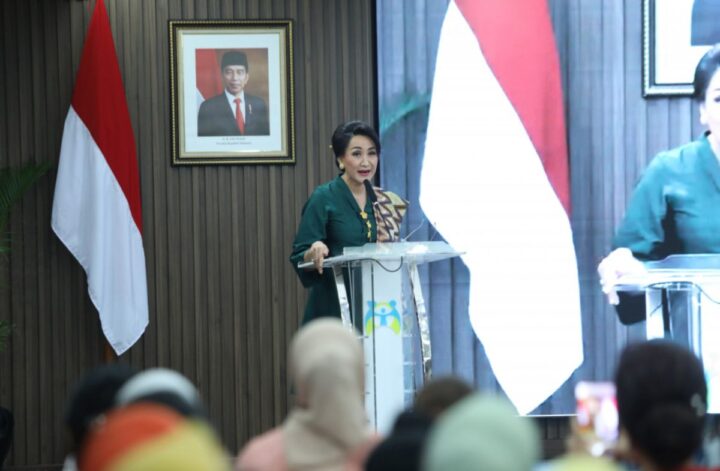Kebaya is a traditional Indonesian blouse that is often worn during special occasions or ceremonies. It is a symbol of elegance and grace, and is usually paired with a sarong or batik skirt. Kebaya has been worn by Indonesian women for centuries, and has become an iconic part of Indonesian culture.
Recently, a parade of Kebaya was organized by KOWANI (Kongres Wanita Indonesia) to celebrate the diversity of the archipelago. The event showcased kebaya designs from different regions of Indonesia, highlighting the unique cultural heritage of each area. From the intricate embroidery of Java to the vibrant colors of Bali, each kebaya represented the rich traditions and customs of its respective region.
The parade was a visual feast of colors and patterns, with models strutting down the runway in a variety of kebaya styles. The audience was treated to a showcase of Indonesia’s cultural diversity, with each kebaya telling a story of its own. The event was not just a fashion show, but a celebration of Indonesia’s unity in diversity.
The kebaya parade also served as a platform to promote local artisans and designers. Many of the kebaya showcased were handmade, using traditional techniques that have been passed down through generations. By highlighting the craftsmanship of these artisans, KOWANI aimed to support and preserve Indonesia’s cultural heritage.
In addition to promoting cultural diversity, the parade also aimed to empower women. KOWANI is a women’s organization that works towards advancing the rights and welfare of Indonesian women. By showcasing the beauty and elegance of kebaya, the parade highlighted the strength and resilience of Indonesian women.
Overall, the parade of Kebaya organized by KOWANI was a celebration of Indonesia’s cultural richness and diversity. It was a visual spectacle that showcased the beauty of traditional Indonesian attire, while also empowering women and supporting local artisans. The event served as a reminder of the importance of preserving and celebrating Indonesia’s cultural heritage, and the need to embrace and appreciate the differences that make us unique.




